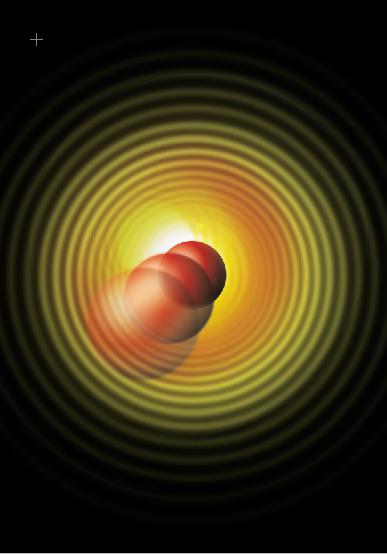
Jack Ng -- jack@ust.hk
C.T. Chan
Department of Physics
The Hong Kong University of Science and Technology
Clear Water Bay, Kowloon
Hong Kong, China
Jun Chen
Zhifang Lin
Department of Physics
Fudan University
220 Handan Road
Shanghai
Popular Version of Paper 5pPA2
Presented Friday afternoon, May 18, 2012
163rd ASA Meeting, Hong Kong
Some laser beams can serve as a "tractor beam" pulling small particles backward against the laser's propagating direction.
Photons are particles. Just like other particles, photons have momentum. As a consequence, photons can exert a force on material object by transferring momentum to it. In a manner similar to propelling a boat by wind, by streaming photons to hit a particle will in general push the particle to move forward. However, a "tractor beam" pulling particles backward is indeed counter intuitive and is unexpected even for many scientists.
Light can indeed "attract" in some cases. In general, particles tend to migrate to position with low potential energy, which, for a small dielectric particle, essentially means a region of high laser intensity. In the famous optical tweezers, light is focused to a tiny spot, and small particles such as glass beads, polymer beads, and cells are attracted towards the tiny bright spot and trapped there. But this phenomenon is probably more appropriate to say that the light "grabs" rather than "pulls", as the particle will remain stable in the trap after being drawn to the focus. Here, we theoretically discuss another possibility-a backward scattering force which is always opposite to the propagation direction of the beam so that the beam keeps on pulling an object towards the source without an equilibrium point.
The trick for the "tractor beam" is to use a special type of laser beam known as Bessel beams (or other propagation invariant beam). In general, a light beam will experience a phenomenon called diffraction, where the intensity of the beam gradually diminishes due to the beam spreading. Bessel beam has a unique property that it almost does not spread, which means it can maintain its shape over long propagating distance. The cross section of the beam consists of alternating bright and dark concentric rings, as depicted pictorially in Fig. 1. The laser energy in each bright ring is more or less the same. As a consequent, the central bright spot has the highest intensity due to its small area, confining small particles to the central region of the beam. But the intensity along the beam axis is nearly uniform. Consequently, as the particles are pulled to move along the beam axis, the particles will not encounter region of particularly high or low laser intensity, namely, there could not be any trap to “grab” the particle and prevent it from moving further.
Nevertheless, choosing the appropriate beam alone is not enough. The particle size must be either comparable to, or not extremely large compare to an optical wavelength (~500-1500 nm). When a small particle is illuminated by a laser beam, the beam will drive the electrons in the particle to oscillate. There are many patterns or modes for electronic oscillation, each of these oscillation mode is called a multipole in physics. A multipole can collect the laser energy from the beam, and re-emit it to another direction. For a "tractor beam" to work, these multipoles have to be working in harmony through an effect called interference (which is a fundamental wave phenomenon), such that a significant portion of the re-emitted radiation is emitted in the forward direction. Because photons have momentum, this will induce a recoil force that pulls the particles backward. This is how the "tractor beam" works.
We recently demonstrated the possibility of the approach in objects with different shapes. However, unlike the mighty tractor beams in scientific frictions, this approach seems to work only for appropriate microscopic particles.

Fig. 1 Laser "tractor beam" at work. The yellow rings indicate a Bessel beam propagating out of the page, which pull the red particle into the page.